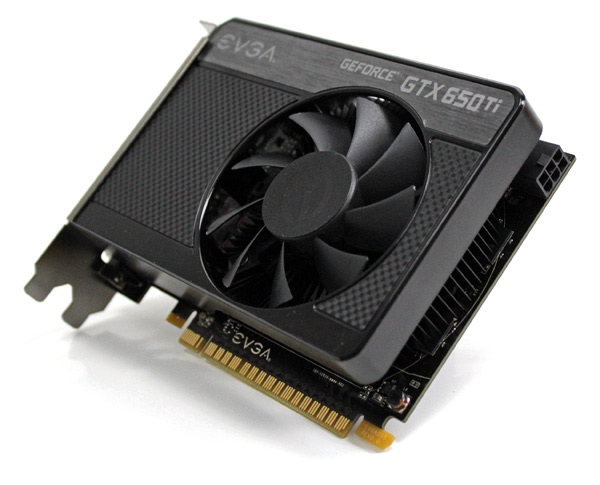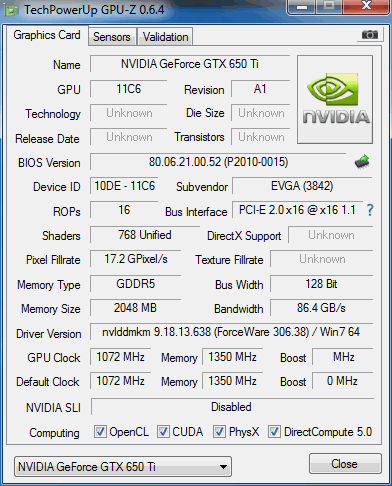Index


Review: GTX 650 done right
Once the GTX 660 and GTX 650 were out, a glance at the performance gap suggested there is a good chance Nvidia will fill it with another card. Today, Nvidia launched its new – GTX 650 Ti, so the company’s offer now lists (top to bottom):
Geforce GTX 690 (GK104)
Geforce GTX 680 (GK104)
Geforce GTX 670 (GK104)
Geforce GTX 660 Ti (GK104)
Geforce GTX 660 (GK106)
Geforce GTX 650 Ti (GK106)
Geforce GTX 650 (GK107)
Geforce GT 640 (GK107)
Geforce GT 630 (re-branded Geforce GT 440)
Geforce GT 620
Geforce GT 610
Geforce 210
The GTX 650 Ti is based on Nvidia’s Kepler GK106 GPU, first seen on the recently launched GTX 660. In its full version, the GK106 GPU packs five SMX units with 960 CUDA cores, 24 ROPs and 80 texture units. In case of the GTX 650 Ti, four SMXs are used, offering a total of 768 CUDA cores and 64 texture units.
Unfortunately, the memory took a hit as well and the GTX 650 Ti has a mere 128-bit memory interface, unlike the GTX 660’s 192-bit. Note that the design allows for both 1GB and 2GB versions of the card.
The GTX 650 Ti’s playing field should be 1080p (1920x1080). Our today’s guest is one of the faster GTX 650 Ti samples that comes with 2GB of memory as well – EVGA’s GTX 650 Ti SSC 2GB.
EVGA obviously didn’t waste time and its launch involves four cards:
EVGA GeForce GTX 650 Ti 1GB
EVGA GeForce GTX 650 Ti SSC 1GB
EVGA GeForce GTX 650 Ti 2GB
EVGA GeForce GTX 650 Ti SSC 2GB
Reference GPUs tick at 925MHz. The GTX 660’s reference GPU clock was at 980MHz when it launched, but many partners overclocked it beyond 1GHz. We expected the same this time around and EVGA did not disappoint.
GPUZ confirms the specs - 768 CUDA cores, 128-bit memory interface and the GPU overclocked to 1072MHz. 
Although the GK 106 GPU originally supports GPU Boost, the cut down version on the GTX 650 Ti doesn’t have it. This is proof enough that the card comes from GTX 650, rather than GTX 660 series. This also means the card always runs at its highest possible clock, which is 1072MHz in SuperSuperclocked's world.
However, the GTX 650 Ti doubled the GTX 650’s specs when it comes to CUDA cores and texture units – 768 vs. 384 CUDA cores and 64 vs. 32 texture units, respectively. Both cards have 16 ROPs and 128-bit memory interface.
Features:
NVIDIA FXAA - Lightning fast anti-aliasing in a huge variety of games with the simple click of a mouse.
NVIDIA TXAA - Next generation anti-aliasing algorithm that delivers the image quality of 8x MSAA, with the performance hit of only 2x MSAA.
Adaptive Vertical Sync - Dynamically adjusts VSync to your monitor's native refresh rate for the smoothest gameplay possible.
Frame Rate Target - Set a target Frame Rate with EVGA Precision X and your card will automatically adjust the power/performance to meet that target.
NVIDIA 3D Vision Surround - Supporting up to three gaming monitors.
PCI Express 3.0 - Offers double the bandwidth of PCI Express 2.0, for highest data transfer speeds. Also backwards compatible with all existing PCI Express motherboards.



